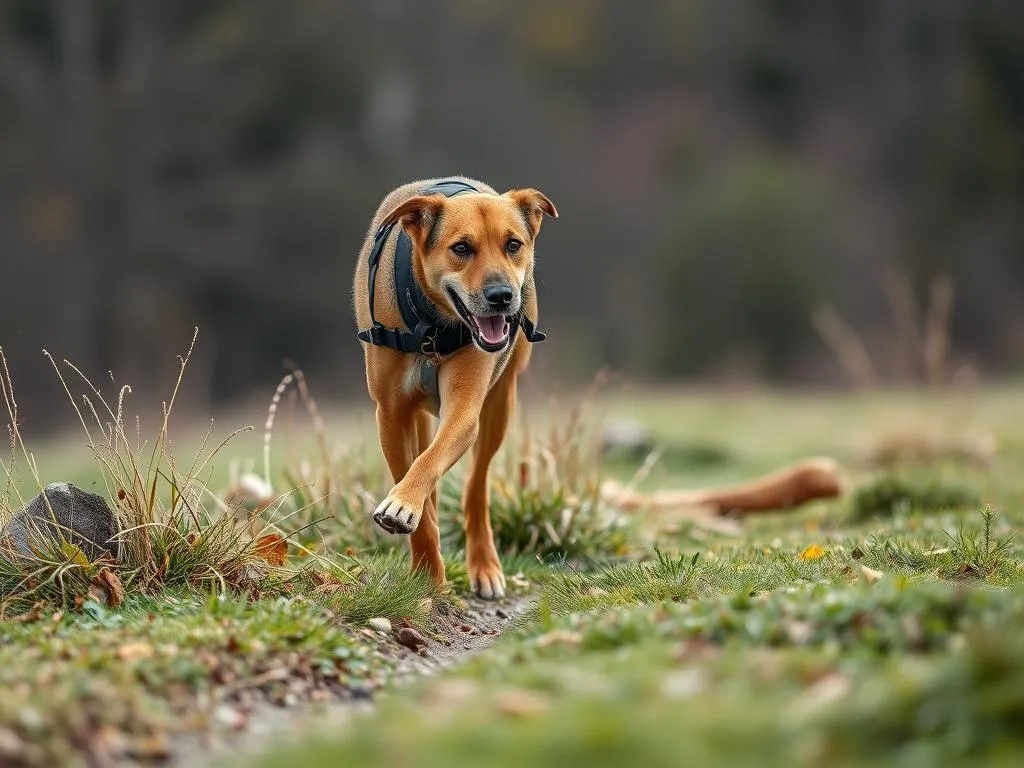
Introduction
Dog health care is essential for ensuring that our furry companions live long, happy lives. One of the most critical components of maintaining a dog’s well-being is regular exercise. Just like humans, dogs require physical activity to stay healthy, build strength, and maintain a healthy weight. But a common question arises: how far can I run with my dog? This article will help you understand the various factors that can influence the distance you can safely run with your dog.
Understanding Your Dog’s Health Needs
Factors Affecting Running Distance
When considering how far you can run with your dog, several factors come into play:
-
Age: Puppies are often bursting with energy but are still developing physically. It’s essential to limit their running distance and increase it gradually as they grow. Adult dogs typically have the stamina for longer runs, while senior dogs may have reduced endurance and require shorter distances.
-
Breed: High-energy breeds like Border Collies and Siberian Huskies can usually handle longer distances compared to low-energy breeds such as Bulldogs or Basset Hounds. Understanding your dog’s breed will provide insight into their exercise needs.
-
Health Status: Dogs with pre-existing conditions or injuries may have limitations on how far they can run. Always consult your veterinarian if your dog has any health concerns.
Importance of Regular Exercise
Regular exercise is vital for dogs for several reasons:
-
Physical Health: Exercise helps maintain a healthy weight, strengthens muscles, and promotes cardiovascular health.
-
Mental Stimulation: Running and playing provide mental stimulation, which is just as important as physical activity. It helps to reduce boredom and anxiety in dogs.
-
Behavior Management: A well-exercised dog is less likely to engage in destructive behaviors. Regular activity can help prevent behavioral issues that arise from pent-up energy.
Assessing Your Dog’s Fitness Level
Signs of Good Health
Before hitting the pavement, it’s essential to assess your dog’s fitness level. You can look for the following signs:
-
Normal Weight and Body Condition: A healthy dog should have a defined waistline and ribs that are slightly visible.
-
Energy Levels and Enthusiasm for Activity: A happy dog will show excitement when it’s time to go for a run.
-
Regular Vet Check-Ups: Regular veterinary visits can help ensure your dog is in good health and ready for exercise.
Recognizing Signs of Overexertion
While running, it’s essential to be vigilant about your dog’s well-being. Common signs of overexertion include:
-
Panting: Excessive panting, especially if accompanied by drooling, may indicate fatigue.
-
Limping: If your dog starts to limp, it’s time to slow down or stop.
-
Fatigue: If your dog seems unusually tired, it may be a sign that they need a break.
If your dog shows any signs of distress, stop the run immediately and provide water, rest, and shade.
How to Determine the Ideal Running Distance
General Guidelines by Breed
Different breeds have different exercise needs. Here are some general guidelines:
-
Small Breeds: Breeds like Chihuahuas or Pugs may only need short bursts of activity. Aim for 1-2 miles, depending on their fitness.
-
Medium Breeds: Breeds like Beagles or Cocker Spaniels can handle runs of 2-4 miles, depending on their energy levels.
-
Large Breeds: Breeds such as Golden Retrievers and German Shepherds can typically run 4-6 miles or more, assuming they are in good health.
Age-Based Recommendations
Age is a critical factor in determining how far you can run with your dog:
-
Puppies: Gradual increases are essential; a good rule of thumb is 5 minutes of exercise per month of age, up to twice a day.
-
Adult Dogs: Most healthy adult dogs can run 3-5 miles regularly, but this should be tailored to their individual fitness.
-
Senior Dogs: Older dogs may benefit from shorter runs of 1-3 miles, with more frequent breaks. Always monitor their pace and energy levels.
Seasonal Considerations
Seasonal factors can also affect how far you should run with your dog:
-
Running in Hot Weather: Dogs can easily overheat, especially in warm weather. Ensure you run during cooler parts of the day and provide frequent water breaks.
-
Running in Cold Weather: Cold weather can be tough on some breeds, especially those with short coats. Limit runs in very low temperatures and consider providing a doggy jacket for short-haired breeds.
Preparing for a Run with Your Dog
Essential Gear
Having the right gear can make a significant difference in your running experience:
-
Leashes and Collars: Invest in a comfortable, durable leash and collar that fits well. Consider a harness for added control.
-
Hydration: Always carry water for your dog, especially on longer runs. Portable dog water bottles or collapsible bowls are convenient options.
Setting a Routine
Creating a running routine can help prevent injuries:
-
Warm-Up Exercises: Just like humans, dogs benefit from warming up. Start with a slow walk to loosen up their muscles.
-
Cool-Down Practices: After your run, take a few minutes to walk slowly and allow your dog to cool down. Stretching can also help prevent injuries.
Tips for a Successful Running Experience
Training Your Dog to Run
Training plays a crucial role in how far you can run with your dog:
-
Building Endurance Gradually: Start with shorter distances and gradually increase as your dog becomes more comfortable and fit.
-
Positive Reinforcement Techniques: Use treats and praise to encourage your dog during runs. This will make them more eager to participate.
Keeping Your Dog Safe
Safety is paramount when running with your dog:
-
Avoiding Hazardous Areas: Stay clear of busy roads and areas with wildlife that may startle your dog.
-
Understanding Appropriate Leash Use: Use a leash when necessary, particularly in crowded areas or near traffic. A hands-free leash can be a great option for runners.
Alternative Forms of Exercise
Other Activities Besides Running
If running isn’t suitable for your dog, consider these alternatives:
-
Hiking: A great way to explore nature while giving your dog a workout.
-
Swimming: Many dogs love water, and swimming is an excellent low-impact exercise.
-
Playing Fetch: A classic game that can be just as tiring as a run.
Choosing the right activity depends on your dog’s preferences and abilities.
Importance of Mental Stimulation
Mental stimulation is just as crucial as physical exercise:
-
Interactive Games and Puzzles: Engage your dog’s mind with toys that challenge them.
-
Socialization: Regular playdates with other dogs and people can help keep your dog mentally sharp and socially adept.
Conclusion
Understanding your dog’s health and fitness needs is essential for ensuring enjoyable and safe exercise. By considering factors such as breed, age, and health status, you can determine how far you can run with your dog. Regular exercise not only keeps your dog physically fit but also enriches their mental well-being. Always consult with a veterinarian for personalized advice and share your experiences or tips in the comments section below. Happy running!









